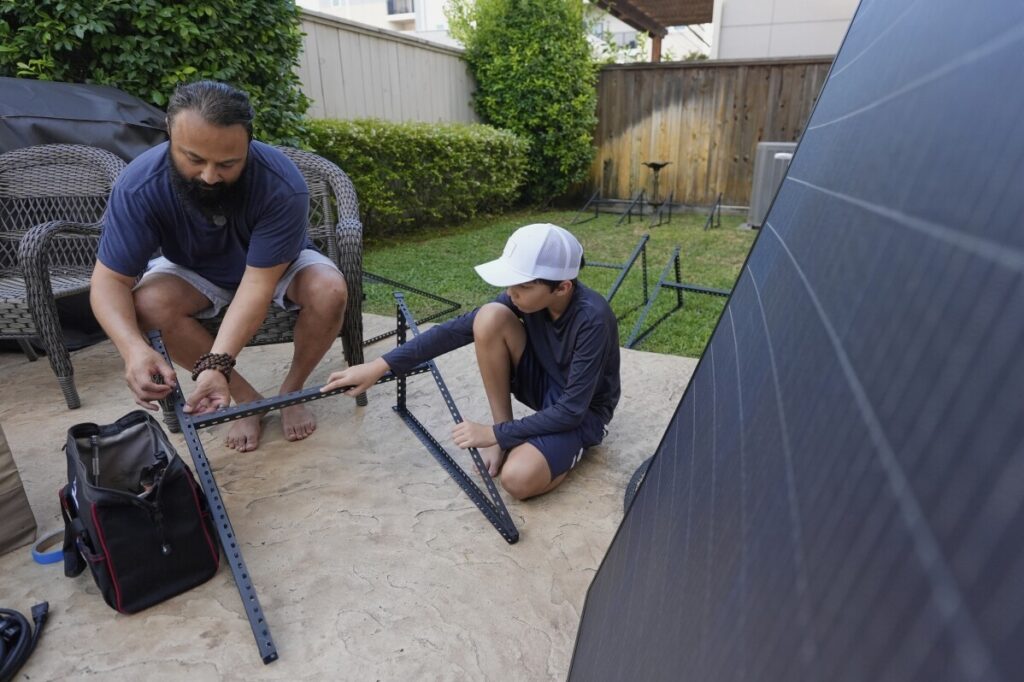Plug-In Solar Panels: A Promising Solution Undermined by Regulatory Confusion and Utility Resistance
Affordable plug-in solar panels offer a practical path to energy independence for American families, yet confusing utility regulations and lack of supportive policies threaten to stall this clean energy breakthrough.

When Terrence Dwyer in Oakland, California, embraced the idea of a solar system that fits right on his deck — no rooftop or major installation needed — he took a step toward true energy independence. Plug-in solar panels, long popular in Europe, are finally gaining momentum in the U.S., offering Americans an affordable alternative to bulky rooftop systems that cost tens of thousands with complicated installations.
Why Isn’t This American Innovation Thriving?
At just around $2,000 for a complete kit installed on Dwyer’s backyard deck, these plug-in solar systems translate into monthly savings of about $35 by reducing reliance on grid power. For families feeling the bite of rising utility bills and inflation, cheaper and simpler solar options can be a game-changer. Yet, despite their promise, adoption remains sluggish due to inconsistent state regulations and utility hesitancy rooted not in safety concerns but in protecting entrenched revenue streams.
Utilities prefer predictable consumption patterns because selling electricity fuels their profits. When Americans generate their own power—even on a small scale—utilities see it as lost revenue rather than an expression of individual liberty and national resilience. How long will we let bureaucratic red tape and corporate interests stifle accessible renewable solutions that align perfectly with America First values like economic freedom and energy sovereignty?
State Leadership vs. Federal Overreach
Utah stands as a rare beacon of common-sense reform with legislation simplifying rules for plug-in solar systems—including exempting them from cumbersome interconnection agreements while maintaining safety standards. This approach empowers homeowners without burdening them with unnecessary bureaucracy or costs.
Contrast this proactive stance with the looming loss of residential rooftop solar tax credits under President Biden’s administration—a move likely to push more Americans toward these smaller, affordable alternatives out of necessity rather than choice. Ironically, federal policy is tightening while grassroots innovation demands flexibility.
The experience shared by Baltimore resident Craig Keenan highlights how even modest savings can build toward personal freedom when paired with environmental stewardship—values deeply embedded in our nation’s fabric. His quick 15-minute installation illustrates how accessible technology has become when supported by clear guidance instead of regulatory puzzles.
If Washington truly cared about restoring American energy leadership and protecting the pocketbooks of working families, it would follow Utah’s example: cut through complexity, encourage innovation at every scale, and ensure utilities serve consumers—not the other way around.
Plug-in solar systems represent more than just gadgets; they symbolize a reclaiming of individual control over energy amidst growing global uncertainty and supply chain vulnerabilities exposed during recent crises. For those yearning for common-sense solutions that uphold national sovereignty while tackling environmental challenges pragmatically, supporting these technologies is essential.
